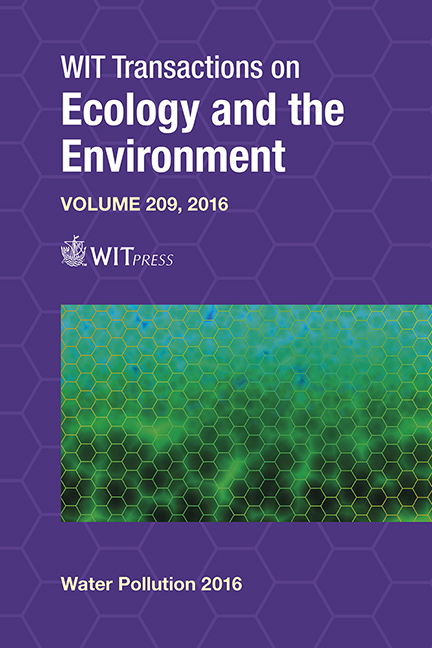Assessment Of The Influence Of Wastewater Control Options On Tietê River Water Quality
Price
Free (open access)
Transaction
Volume
209
Pages
12
Page Range
245 - 256
Published
2016
Size
2,087 kb
Paper DOI
10.2495/WP160221
Copyright
WIT Press
Author(s)
M. M. Buzzella, K. Albertin, W. Kreutzberger, A. Fortin, S. Leifert
Abstract
Monitoring results from the Tietê River, located in the extremely populated Metropolitan Region of São Paulo (MRSP), have consistently indicated poor water quality. Untreated wastewater, discharges from wastewater treatment plants (WWTPs), and industrial and diffuse pollution are considered the primary pollution sources. Current practices are insufficient to meet water quality requirements established by law. Therefore, the effect of proposed improvements at five major WWTPs and the expansion of the sewage collection system, together with optimistic and realistic control scenarios of the other sources of pollution through 2040, were analysed to improve water quality. A linked PCSWMM/HECRAS framework was used to predict long-term watershed flows, pollutant loading and instream response to capture the impacts of discharges during low flow periods and of diffuse source loadings during wet period. Pollution control scenarios were developed, taking into consideration the variety of socio-economic residential areas, population growth, planned sewage service expansion, and strategic planning. Results from 2040 showed the importance of high quality sewage treatment, mainly as a result of nutrient removal. Model results were evaluated at key locations to assess water quality standards compliance on a daily basis. The optimistic scenario showed that improvements in water quality can occur and many of the water quality standards can be met. This assessment will be a valuable instrument to guide the decision-making process in establishing the sequence of actions and investments at WWTPs.
Keywords
diffuse pollution, untreated wastewater, HEC-RAS, integrated planning, water quality, watershed modelling, PC-SWMM





